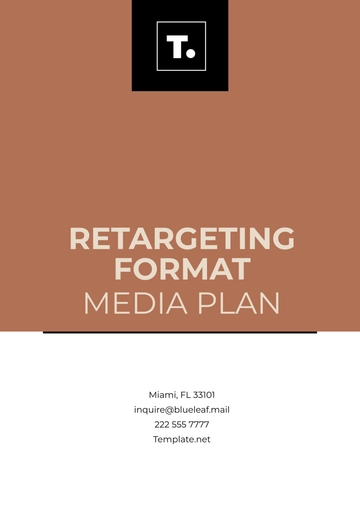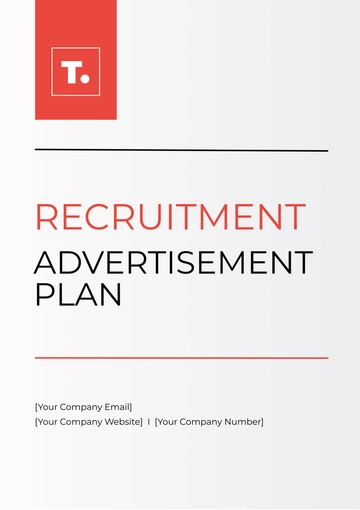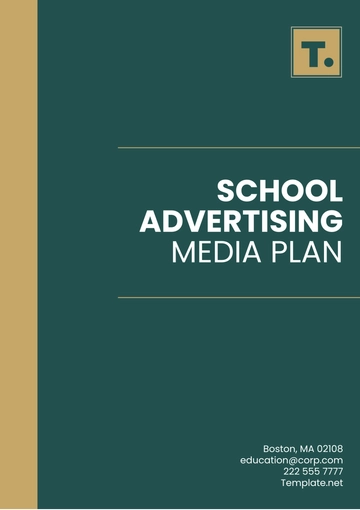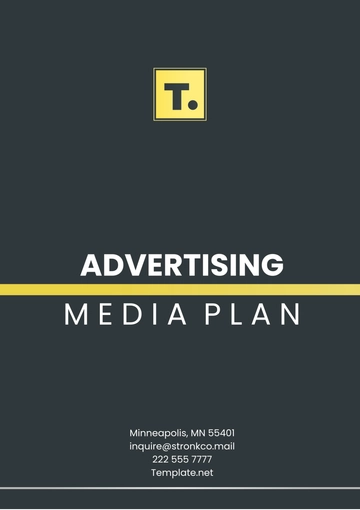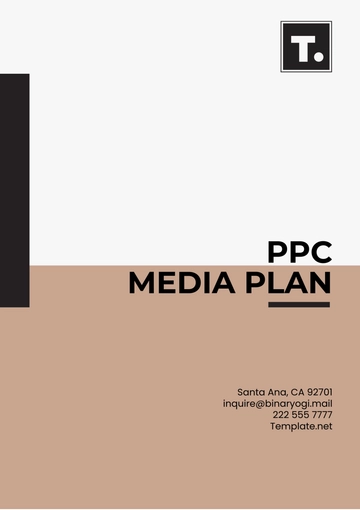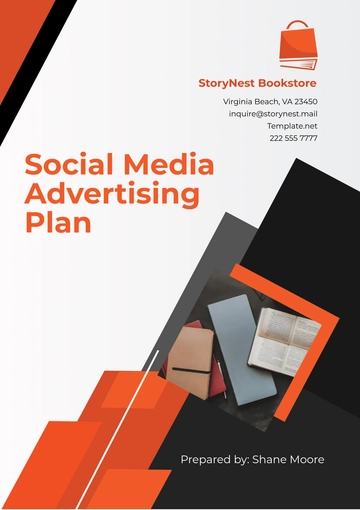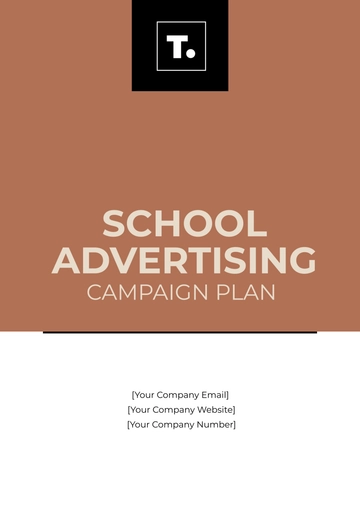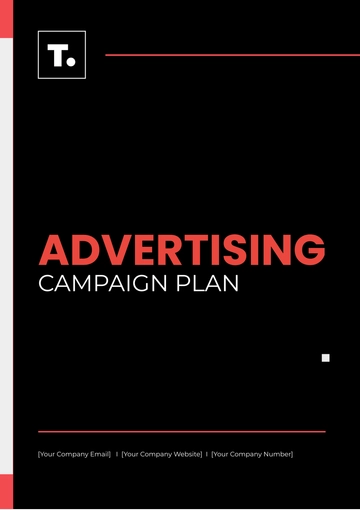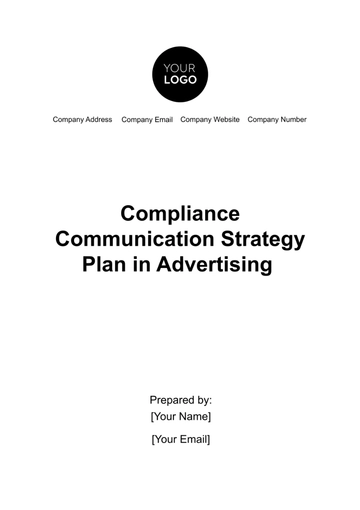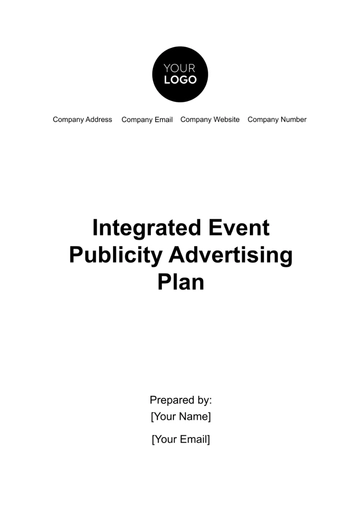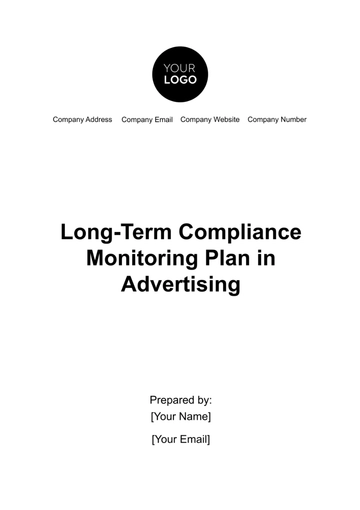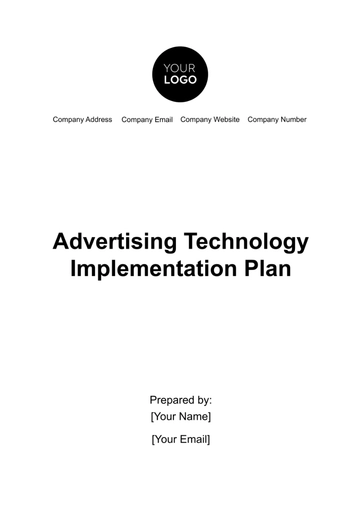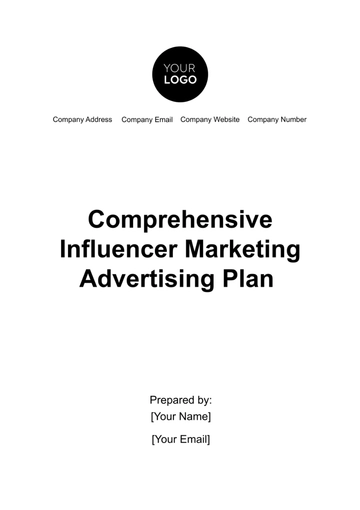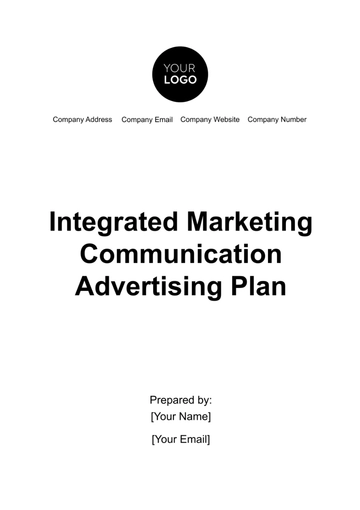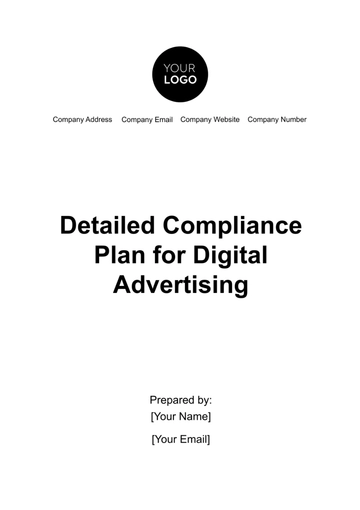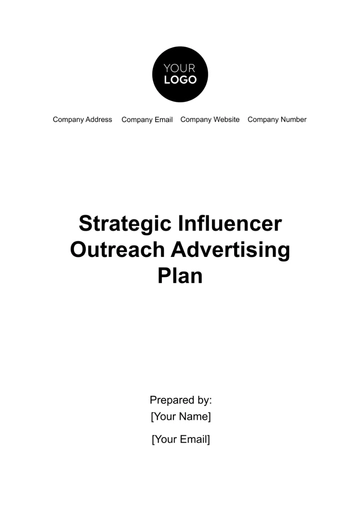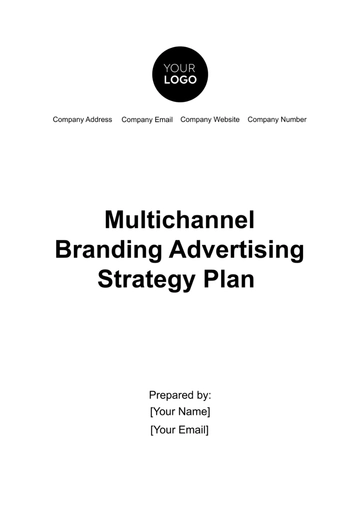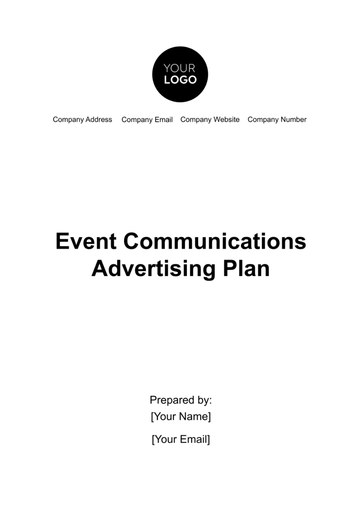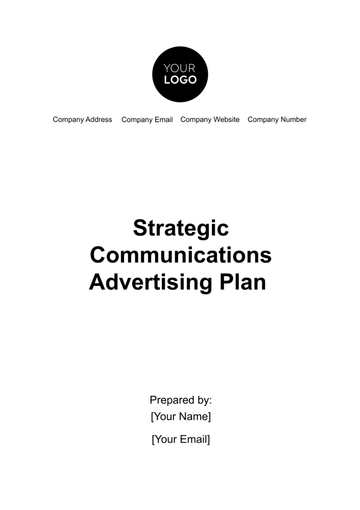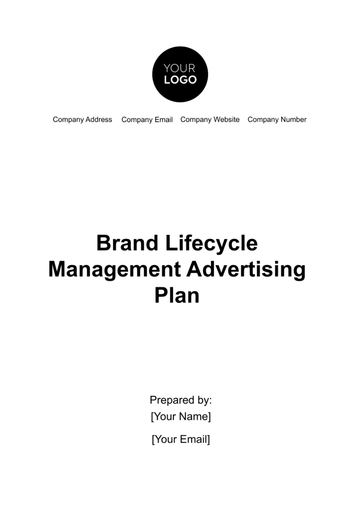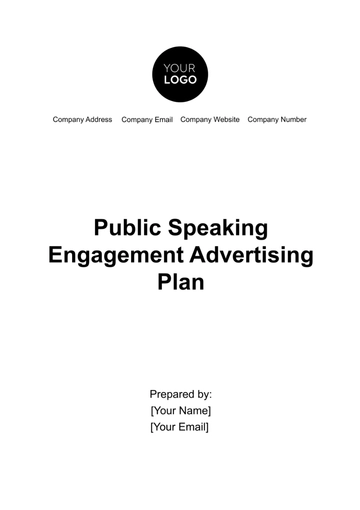Free School Advertising Media Plan
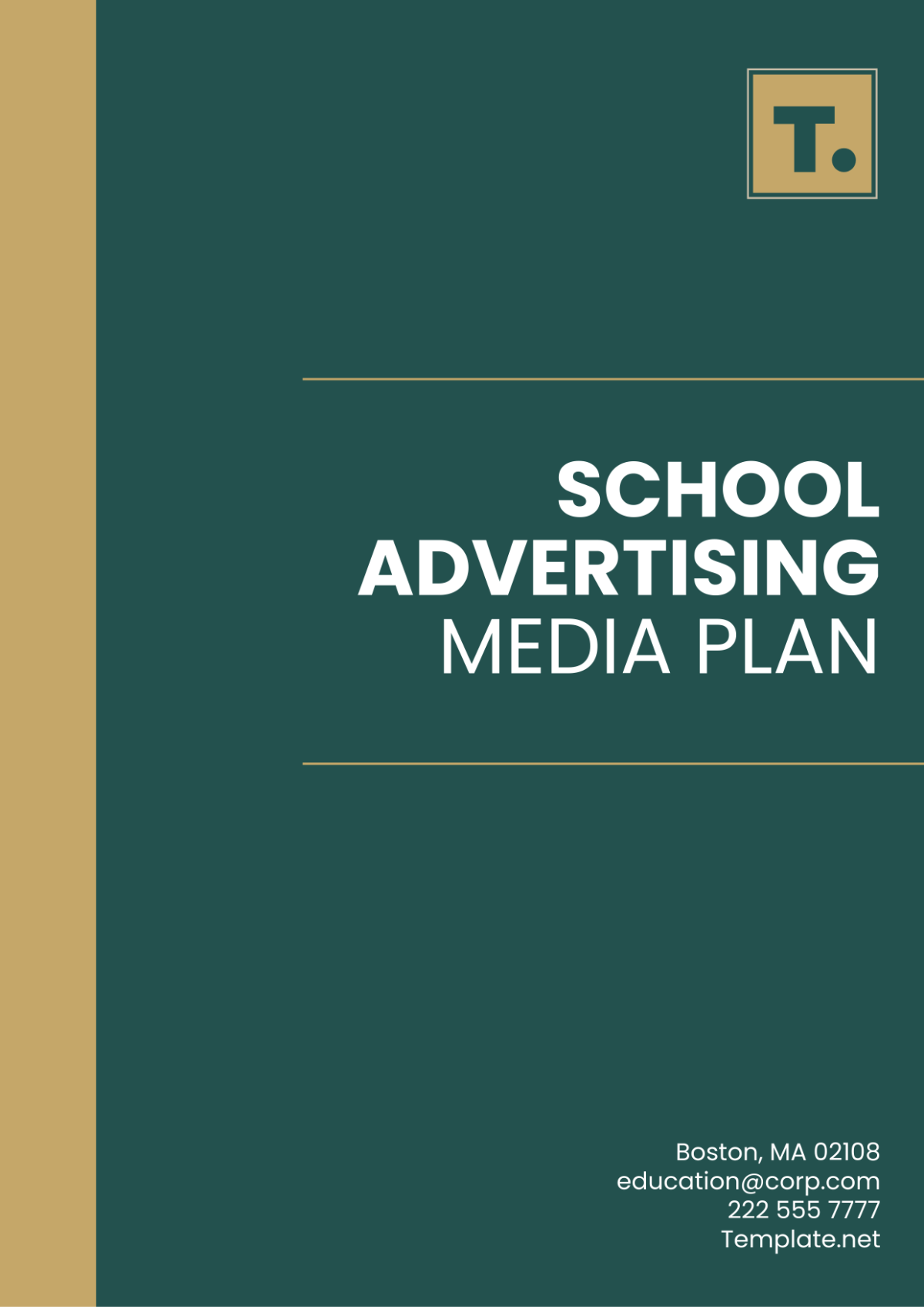
Prepared by:
[YOUR NAME]
[YOUR COMPANY NAME]
Overview
This School Advertising Media Plan outlines the strategies and approaches for promoting [YOUR COMPANY NAME] through various advertising channels to increase brand awareness, boost enrollment, engage with the local community, and support special events. The plan includes a comprehensive media mix, defined target audiences, a clear budget, and a detailed timeline to ensure maximum impact.
Objectives
Increase student enrollment by 20% for the upcoming academic year.
Enhance the school’s visibility and strengthen its brand identity within the community.
Promote specific events such as the open house, sports activities, and fundraising initiatives.
Improve engagement with prospective parents and students through digital platforms.
Target Audience
Prospective Students: High school students, elementary and middle school students (for feeder schools), and transfer students.
Parents: Parents of current and prospective students, as well as those considering private or charter schools.
Local Community: Residents in the local area, including those interested in community events or partnerships.
Alumni: Engaging former students for participation in school activities or donations.
Media Channels
The following media platforms will be used to reach the target audience:
1. Digital Advertising
Social Media: Targeted ads on Facebook, Instagram, and TikTok highlighting student achievements, events, and campus life.
Google Ads: Search and display ads to drive traffic to the school’s enrollment pages.
School Website: SEO optimization and dedicated landing pages for prospective students and parents.
2. Traditional Media
Local Newspapers: Full-page ads promoting open houses, graduation events, and general school info.
Local Radio: 30-second radio spots during peak drive times.
Flyers and Brochures: Distributed at local businesses, libraries, and coffee shops.
3. Out-of-Home Advertising
Billboards: Placed in high-traffic areas near schools, shopping malls, and major intersections.
Transit Ads: Ads on buses or bus shelters near local schools.
4. Events & Community Engagement
Open Houses: Quarterly events for prospective students and parents.
Sports Events: Promote home games to engage the community.
Fundraisers: Advertise school fundraisers through print and digital platforms.
Media Budget
The budget for the School Advertising Media Plan will be distributed across the following categories:
Media Platform | Budget Allocation |
|---|---|
Digital Advertising | 40% |
Local Newspapers | 20% |
Local Radio Stations | 10% |
Billboards | 15% |
Transit Ads | 5% |
Events & Community Engagement | 10% |
Timeline
The advertising campaign will be executed in phases, with specific timelines for each media channel:
Phase | Timeline | Details |
|---|---|---|
Phase 1: Awareness & Branding | January - March | Launch digital ads on social media and Google Ads. Place initial newspaper ads. |
Phase 2: Event Promotion | April - May | Promote open houses and sports events through radio, flyers, and social media. |
Phase 3: Enrollment Drive | June - August | Focus on back-to-school campaigns with intensified digital ads and print media. |
Phase 4: Community Engagement | September - December | Promote community activities, local events, and alumni engagement. |
Monitoring and Evaluation
The effectiveness of the advertising media plan will be measured through:
Digital Analytics: Track website traffic, social media engagement, and online conversions (applications, inquiries).
Enrollment Numbers: Compare year-over-year enrollment data to assess the impact of advertising efforts.
Community Feedback: Collect feedback from parents and students through surveys or informal channels to gauge community response.
Event Attendance: Monitor attendance at open houses, sporting events, and other school functions promoted through the campaign.
Conclusion
This comprehensive advertising media plan is designed to maximize visibility, increase student enrollment, and engage with the local community effectively. By leveraging a mix of traditional and digital media channels, the school will strengthen its brand identity and reach key target audiences in a timely and impactful way.
- 100% Customizable, free editor
- Access 1 Million+ Templates, photo’s & graphics
- Download or share as a template
- Click and replace photos, graphics, text, backgrounds
- Resize, crop, AI write & more
- Access advanced editor
Introducing the School Advertising Media Plan Template from Template.net! This meticulously crafted tool offers an editable and customizable solution for creating impactful advertising strategies. Designed to streamline your process, it's fully editable in our Ai Editor Tool, ensuring seamless customization to fit your unique needs. Elevate your advertising game effortlessly!
You may also like
- Finance Plan
- Construction Plan
- Sales Plan
- Development Plan
- Career Plan
- Budget Plan
- HR Plan
- Education Plan
- Transition Plan
- Work Plan
- Training Plan
- Communication Plan
- Operation Plan
- Health And Safety Plan
- Strategy Plan
- Professional Development Plan
- Advertising Plan
- Risk Management Plan
- Restaurant Plan
- School Plan
- Nursing Home Patient Care Plan
- Nursing Care Plan
- Plan Event
- Startup Plan
- Social Media Plan
- Staffing Plan
- Annual Plan
- Content Plan
- Payment Plan
- Implementation Plan
- Hotel Plan
- Workout Plan
- Accounting Plan
- Campaign Plan
- Essay Plan
- 30 60 90 Day Plan
- Research Plan
- Recruitment Plan
- 90 Day Plan
- Quarterly Plan
- Emergency Plan
- 5 Year Plan
- Gym Plan
- Personal Plan
- IT and Software Plan
- Treatment Plan
- Real Estate Plan
- Law Firm Plan
- Healthcare Plan
- Improvement Plan
- Media Plan
- 5 Year Business Plan
- Learning Plan
- Marketing Campaign Plan
- Travel Agency Plan
- Cleaning Services Plan
- Interior Design Plan
- Performance Plan
- PR Plan
- Birth Plan
- Life Plan
- SEO Plan
- Disaster Recovery Plan
- Continuity Plan
- Launch Plan
- Legal Plan
- Behavior Plan
- Performance Improvement Plan
- Salon Plan
- Security Plan
- Security Management Plan
- Employee Development Plan
- Quality Plan
- Service Improvement Plan
- Growth Plan
- Incident Response Plan
- Basketball Plan
- Emergency Action Plan
- Product Launch Plan
- Spa Plan
- Employee Training Plan
- Data Analysis Plan
- Employee Action Plan
- Territory Plan
- Audit Plan
- Classroom Plan
- Activity Plan
- Parenting Plan
- Care Plan
- Project Execution Plan
- Exercise Plan
- Internship Plan
- Software Development Plan
- Continuous Improvement Plan
- Leave Plan
- 90 Day Sales Plan
- Advertising Agency Plan
- Employee Transition Plan
- Smart Action Plan
- Workplace Safety Plan
- Behavior Change Plan
- Contingency Plan
- Continuity of Operations Plan
- Health Plan
- Quality Control Plan
- Self Plan
- Sports Development Plan
- Change Management Plan
- Ecommerce Plan
- Personal Financial Plan
- Process Improvement Plan
- 30-60-90 Day Sales Plan
- Crisis Management Plan
- Engagement Plan
- Execution Plan
- Pandemic Plan
- Quality Assurance Plan
- Service Continuity Plan
- Agile Project Plan
- Fundraising Plan
- Job Transition Plan
- Asset Maintenance Plan
- Maintenance Plan
- Software Test Plan
- Staff Training and Development Plan
- 3 Year Plan
- Brand Activation Plan
- Release Plan
- Resource Plan
- Risk Mitigation Plan
- Teacher Plan
- 30 60 90 Day Plan for New Manager
- Food Safety Plan
- Food Truck Plan
- Hiring Plan
- Quality Management Plan
- Wellness Plan
- Behavior Intervention Plan
- Bonus Plan
- Investment Plan
- Maternity Leave Plan
- Pandemic Response Plan
- Succession Planning
- Coaching Plan
- Configuration Management Plan
- Remote Work Plan
- Self Care Plan
- Teaching Plan
- 100-Day Plan
- HACCP Plan
- Student Plan
- Sustainability Plan
- 30 60 90 Day Plan for Interview
- Access Plan
- Site Specific Safety Plan

